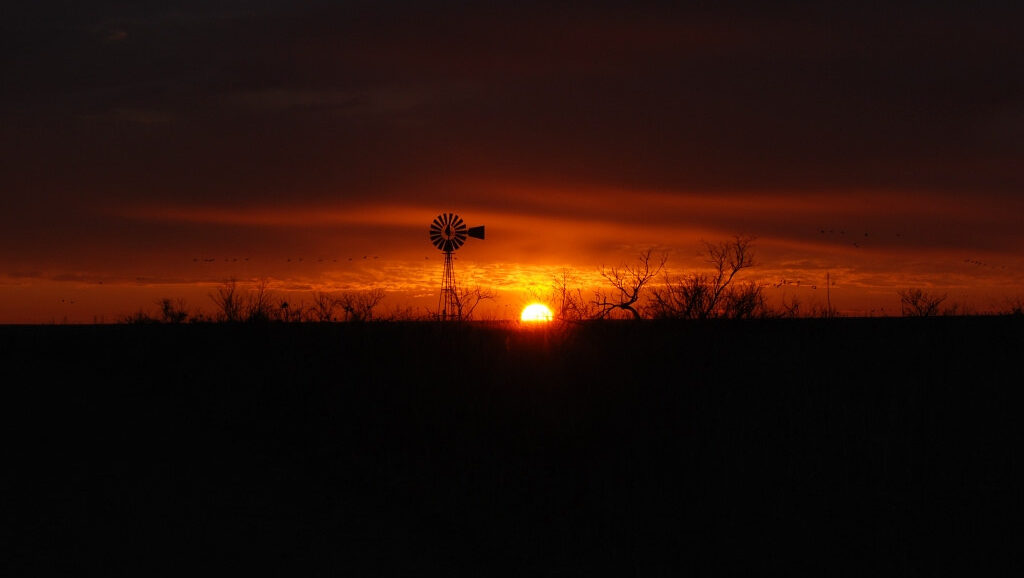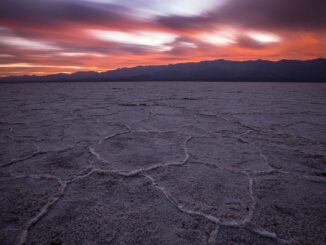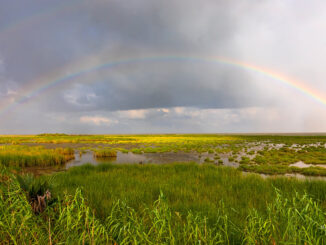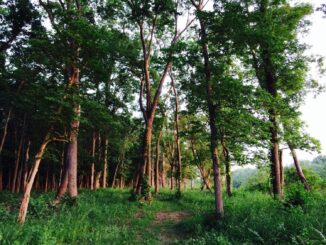
The US government is proceeding with its plan to undertake a massive expansion of a wildlife refuge in western Texas that’s critical to the survival of migrating waterfowl.
The Muleshoe National Wildlife Refuge is located just outside Lubbock, Texas, close to the border with New Mexico. Valued for the lakes and wetlands that serve as waystations for migrating birds and other wildlife, the US Fish and Wildlife Service announced in April that it wanted to greatly expand Muleshoe.
The refuge’s current expanse is about 7,000 acres in size or almost 3,000 hectares. The Service says its plan calls for permanently conserving 700,000 acres, or nearly 300,000 hectares, as part of a larger refuge, a tenfold expansion.
FWS is now seeking to acquire land to add to the wildlife refuge’s territory.
“This plan is a critical step in protecting the future of the Southern High Plains for iconic species like the sandhill crane and lesser prairie-chicken,” said FWS Southwest Regional Director Amy Lueders in a release.
Muleshoe National Wildlife Refuge is surrounded by private land. To expand the refuge, FWS says it will seek out voluntary agreements with landowners to sell parcels of land to the government that will be later added to the refuge’s extent.
The expansion plan falls under the America the Beautiful initiative spearheaded by President Biden’s administration. Currently, the refuge’s boundaries lie entirely in Texas, but the FWS indicated that it will likely be expanded into New Mexico after new lands are acquired to add to it.
“The plan encompasses a portion of the Southern High Plains region in New Mexico and Texas where habitat for sandhill crane, pronghorn, and lesser prairie-chicken remains,” FWS said. “This habitat can be readily enhanced through connectivity corridors and preservation of existing large block grasslands, playa wetlands, and saline lakes.”
An expansion of up to 700,000 acres is the Service’s goal, but the plan will be limited to how much land it can acquire through voluntary agreements with landowners.
Where it can’t purchase land outright, FWS says it will try to negotiate voluntary wildlife habitat easements. Such agreements would save some of the land from development while keeping it in private hands.
FWS then plans to restore the habitat to a close-to-native state, encouraging the growth of native species and a return to wild conditions. Much of the private land surrounding the existing wildlife refuge has been converted to pasture for grazing cattle.
Despite the fact that the project is 100 percent voluntary on the part of landowners and there are no plans to seize land through eminent domain, FWS is facing some political opposition.
A group calling itself the American Stewards of Liberty is promoting false information on its website claiming FWS is seeking to expand Muleshoe National Wildlife Refuge by up to 7 million acres. That’s an area larger than the state of Massachusetts.
The same group hosted an August 1 meeting in the town of Littlefield, Texas to raise money on the issue.
FWS says it has no plans to force land sales.
FWS lands also routinely host active oil and gas operations, including on wildlife refuges, so there’s no basis for the opposition group’s claims that the refuge’s expansion would put oil and gas reserves existing at these lands permanently off limits.
The Muleshoe National Wildlife Refuge expansion plan has the backing of the Texas Parks and Wildlife Department, the New Mexico Game and Fish Department, and The Nature Conservancy.
“The expansion will help address impacts from changing landscape drivers including energy development, habitat fragmentation, aquifer decline, and shrinking wetland habitat,” FWS said.
©2025 Public Parks
Park Info
Park:
Muleshoe National Wildlife Refuge
Location:
Texas, USA



